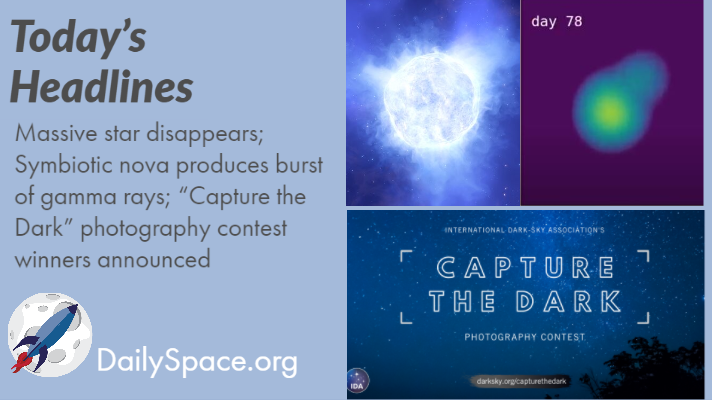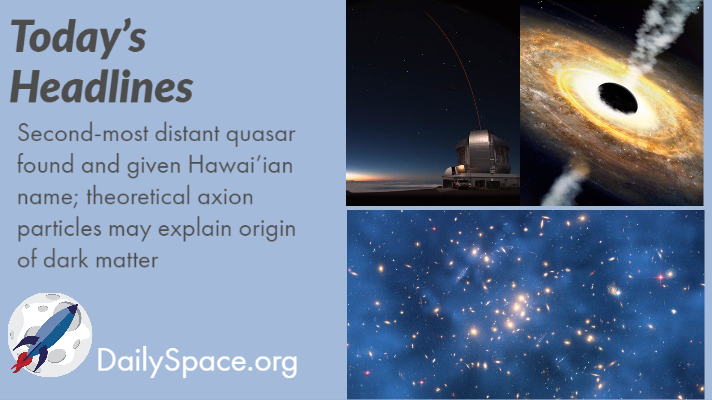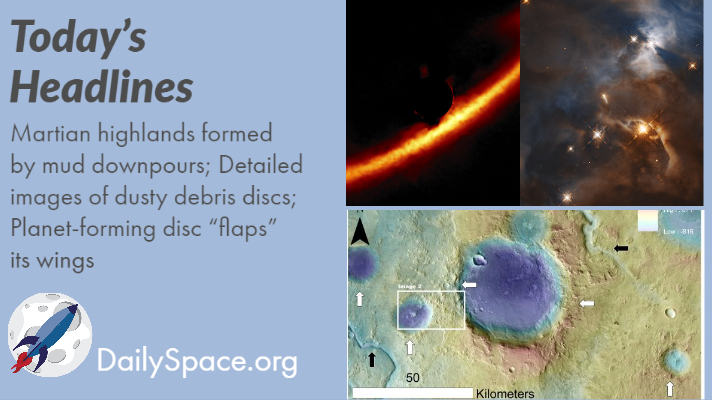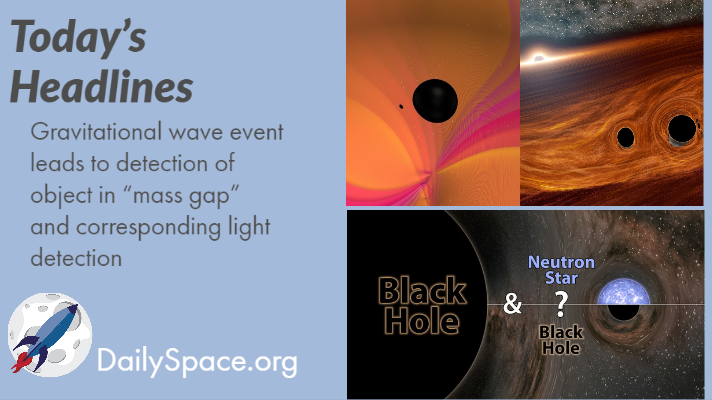
Rocket Roundup for July 1, 2020
Our one and only launch of the week was yesterday, June 30th, with a brand new SpaceX Falcon 9 booster carrying the latest addition to the GPS constellation from Cape Canaveral at 8:10 pm UTC.

Our one and only launch of the week was yesterday, June 30th, with a brand new SpaceX Falcon 9 booster carrying the latest addition to the GPS constellation from Cape Canaveral at 8:10 pm UTC.

Join us today for our top story: a massive star has disappeared, probably due to dust but maybe not. Also, we explain how a symbiotic nova occurs and produces gamma rays. Finally, we are pleased to share some of the winners and runners up in the “Capture the Dark” photography contest from the International Dark Sky Association.

Join us today as we look at big news on a big quasar! Pōniuāʻena is the second-most distant quasar ever found, and its existence challenges conventional black hole formation theory. Also, we explain how the theoretical axion particle might be involved in the origin of dark matter.

Join us today as we look at a possible explanation for how mudstone formed in the Martian highlands. We share a plethora of new images from the Gemini Planet Imager of detailed, dusty discs around stars. And finally, Hubble sees another planet-forming disc flap its bat-wings.

For today, both stories are related to the detection of gravitational wave events and are believed to be caused by the merger of massive objects far off in the universe.

Join us for this week’s Rocket Roundup with host Annie Wilson as we look back at two Chinese rocket launches this past week, including one we actually got to livestream!